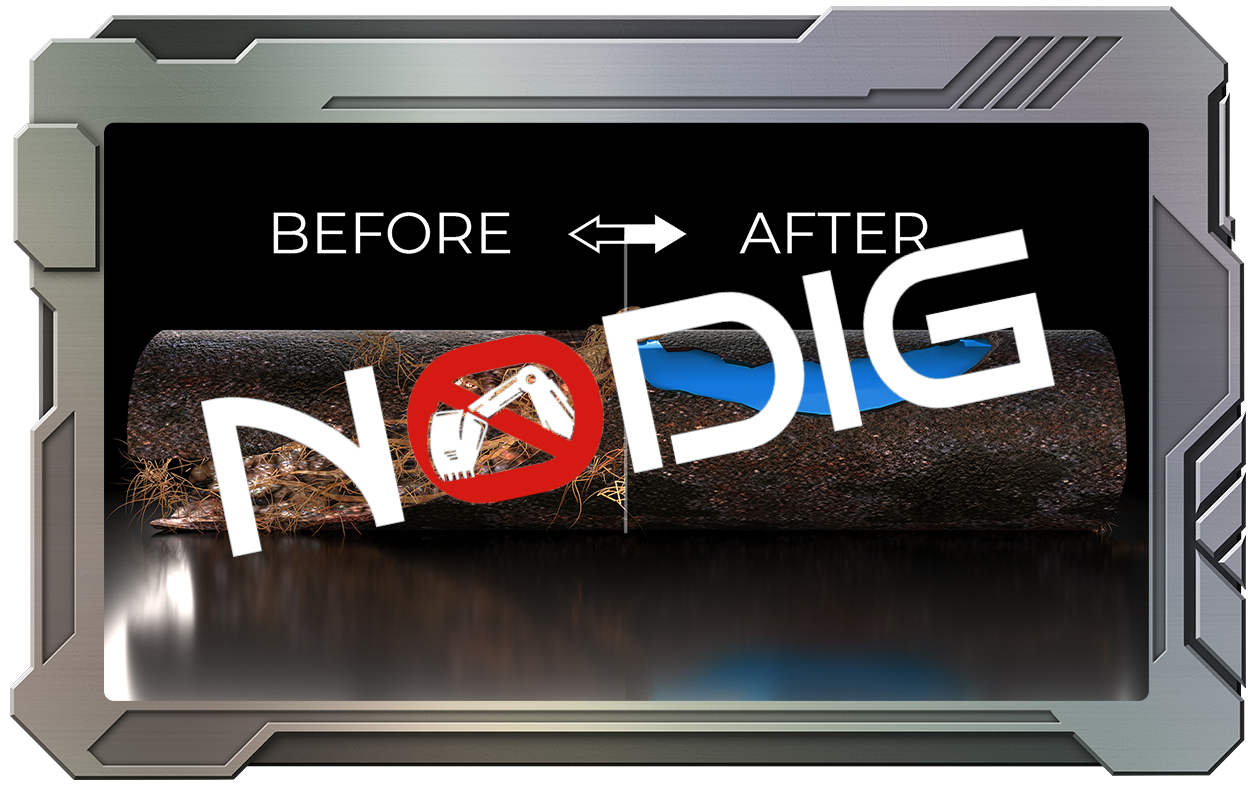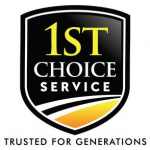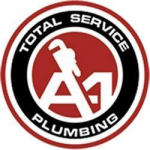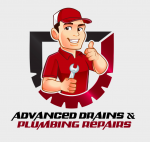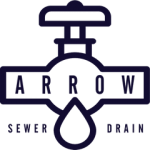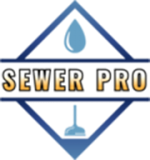Do you have a clogged drain in your house? In some cases, grabbing a plunger won't be enough.
Collected debris and broken pipes can clog main sewer lines that lead straight to your septic system. If this is the case, you can end up flooding and having major plumbing problems. Trust us; you don't want that to happen.
Drain cleaning can fix main drain line clogging, but there are many ways. Let's discuss how you can unclog your sewer cleanout line and everything you need to know about maintaining it.
Tips to Unclog a Sewer Line
Here's the first thing you should do to unclog the main sewer line pipes. Turn off the water to release sewer line pressure. If you think you have a main sewer line clog, you can do so by shutting off your main water supply source.
The next thing you should look for is your sewer cleanout line. It's usually a small white pipe with a diameter of around three to four inches and a screw-on cap seal. After which, you can turn to these tips on sewer line repair and cleaning:
- Chemical Drain Cleaner: Chemical drain cleaners or professional-strength drain cleaners use harsh chemicals to clear a sanitary sewer blockage. Protect yourself from burns using safety wear, like gloves, and a pair of goggles. You can use caustic soda for most sewer systems. You can also use a copper sulfate-based chemical cleaner for tree root clogs and a bleach-based chemical cleaner for toilet paper jams. Each chemical cleaner comes with instructions, but you generally pour your chemical substance down the sewer pipe and leave it for at least 15 minutes. Use hot water to flush out your pipe afterward.
- Pipe Cleaning: A thorough cleaning may be enough if you have a clogged kitchen sink. You can remove blockages manually if the problem isn't as serious yet. Loosen the nuts or your piping and plumbing fitting with a wrench to start. Empty the contents of your U-shaped tube into a bucket and remove the remaining debris using a toothbrush. Flush out your pipe with hot water and reseal the nuts or fitting.
- Dish Detergent: Aside from chemical cleaners, you can turn to safer options that are easy to find in your house. One of these is your dish detergent, which can act as a lubricant in removing a sewer clog. You must add around a quarter of dish soap to a bowl with boiling water and pour the mixture down your pipe.
- Hot Water: By now, you may notice the pattern of using hot water in drain cleaning. Water heating increases the number of solvents in your water, which makes it dissolve more material than water at a steady temperature. You can use this to dissolve grease and grime that cling to debris that causes blockages.
- Baking Soda: Baking soda or sodium bicarbonate is a good cleaning agent for a clogged sewer drain because it's a mild alkali that can dissolve dirt and grease easily. You can either combine it with salt or vinegar. Baking soda and salt create a chemical reaction that can unblock a kitchen or bathroom drain. Mix both in a 1-to-1 ratio and leave the mixture for a few hours before rinsing with hot water. On the other hand, vinegar can neutralize acidic odor molecules and deodorize drains. You can also use a 1-to-1 ratio for a baking soda and vinegar mixture.
- Bent Wire Hanger: This may shock you, but you can use a clothes hanger to unclog a sewer line. Straighten your wire hanger to form a hook. Push the end into the drain cover to remove obstructions. Make sure that you don't push the clogs further down the drain. Pour boiling water after.
- Drain Snake: If common household materials can't clear your blocked drain, you can use plumbing tools like the drain snake. When you go to your local shop, they may refer to this as either the plumbing snake or the plumber's snake. It's easy to use drain snakes. You only have to push its end into the blocked drain and turn its handle. Push until it becomes stiff. Then, you can rotate it against the blockage.
- Plumbing Auger: For larger pipes, your drain snake will be useless. You'll have to use a plumbing drill this time. You can imagine it to be a mechanical hybrid of your drain snake and wood auger. They are power-assisted and provide a more powerful mechanical drain cleaning. However, you might need the help of a professional plumber for this.
- Wet and Dry Vacuum: Another powerful mechanical drain cleaning tool can be your own wet and dry vacuum. You can do this yourself but ensure that you take the proper precautions not to destroy your vacuum cleaner. Set it to Liquids to help you clear clogged sewer lines. Ensure you cover its vent and seal the drain lines to avoid mess.
- Hydro Jet: Hydro jet sewer cleaning involves using a high-pressure hose attached to a water pressurizer. It uses water pressure from its specialized nozzle head to your sewer line to unclog main sewer line pipes. Doing so can break up debris and channel them down your drain pipe, but consider the Hydro Jet sewer line cost first!
The tips we've discussed here range from simple ones to more mechanical ones. Feel free to combine a few tips with working on your blocked sewer line.
What Causes Main Sewer Line Clogs?
Sewer clogs can indicate problems in your plumbing system. They can have many possible causes depending on your location and household use.
Your sewer line won't drain properly if you have damaged pipes. Corrosion, exposure to heavy construction equipment, and time can damage your plumbing system and even cause your sewer line to collapse.
An older main sewer drain can experience root infiltration as well. Tree roots are commonly drawn to the warmth and moisture of main sewer lines. This causes them to grow nearby and cause blockages.
Check whether your sewer line blockages are caused by tree roots.
Another natural cause of clogs is bellies in your sewer line. Soil changes over time can cause sagging sewer lines. The downward bend can easily clog your main sewer line with paper and other waste.
That said, flushing foreign objects can cause clogging in your sewer line. This includes your paper towel, tampons, menstrual pad, diaper, and tissue paper. They are solids and collect debris along the way.
Even substances that seem liquid can cause blockages, too. Pouring fats, oil, and grease down the drain may be convenient, but they thicken and trap debris when they cool.
How to Identify a Clogged Main Sewer Line
Diagnosing a clogged sewer pipe involves calling a professional to conduct a camera inspection to pinpoint the location and cause of your clog. However, if you experience the following symptoms, you might have a clogged sewer line:
- Gurgling Sounds: Does your toilet make these sounds? You may have a sewer line clog. Toilet drains are connected to the septic tank or the municipal sewer system. Sewer clogs can cause drains in your house to stop functioning properly. This causes the water level in your toilet to fluctuate and create these sounds.
- Non-Functioning Toilet: Does flushing your toilet cause other drains to overflow? Or does your toilet overflow when you use the washing machine or dishwasher? This may suggest a clogged sewer line. Your toilet is a big indicator of sewer line clogs because it has the biggest drain line and the most direct line to your sewer. It shouldn't normally affect all the drains in your house when you flush it.
- Slow Drains: Do many of your drains run slow? You might be experiencing clogged sewage. The keyword here is many. If only one drain line is running slow, you might be able to easily address the problem using some of the simple ways we've discussed above. If multiple drains aren't working properly, it can suggest a more serious issue.
- Foul-Smelling Odor: Is your sink, toilet, bathtub, or shower producing a bad smell? This could indicate that you have a clogged sewer line. Wastewater can come back through these sources. You may not see it as soon as the blockage happens, but an indicator is a bad smell they produce. It's a sign that contaminated water is springing up your drain pipes.
- Dirty Water in Strange Places: Do you notice dark, stinky, and gross-looking water appearing where it shouldn't be? Your main sewer line clog may be more serious than you're imagining. When your sewer line is clogged, your dirty water has nowhere else to go. Naturally, it can back up in your shower, tub, or floor drain. Check the possible lowest entry points in your home. These are the most probable places you'd find them because they are the most accessible. A sure sign of a sewer line problem is if you find sewage, instead of dirty water, coming back up through your drains. This is called a sewer backup. Ensure you use the proper protective gear and the most powerful cleaners when dealing with them.
- Exterior Issues: Aside from telltale signs of clogged sewer lines, you can look inside your house and go out and check for certain indicators. Look out for water puddles when it hasn't rained for a while, bad odors, brown and yellow patches on your lawn, and exposed tree roots close to your house. These unusual circumstances can suggest a main sewer line clog.
Maintenance to Prevent Future Clogs
Now that you know the causes and indicators of sewer line clogs, it's time to know how to maintain your sewer pipes to prevent future sewer line clogs.
Replace Old Pipes
Don't wait for your sewer pipes to be damaged. Replace old sewer lines and clay pipes, especially if you live in an older house.
Prevent sewer drain blockages while you have the chance to. You'll need a professional plumber for this to ensure proper installment.
Cut Down Old Trees
Old trees may have sentimental value, but they can cost you sky-high expenses later when blocking water flow.
Remember that tree roots can clog toilet paper and solid waste in your drain lines and cause main sewer line blockage.
It's best to stop these tree roots from infiltrating your drain lines before you regret it later.
Relocate Your Plants
Root infiltration doesn't have to come from trees only. The shrubs and flower plants in your lawn can cause it too.
Keep them away from your main drain, especially if they're not planted in pots.
Be Careful What You Flush Down the Toilet
Flush only water and human waste down the toilet. Don't flush feminine hygiene products down your toilet.
The wastebasket is there for your thick paper towels, tampons, and sanitary pads.
Install a Backflow Preventer
A backflow preventer for a sewer line can help you prevent a main sewer line clog.
It's a device designed only to keep your water flowing in one direction. It restrains water from flowing in the opposite direction, causing a backflow.
Frequently Asked Questions (FAQs)
Learn more about unclogging sewer lines here!
A clogged sewer line can cost you thousands of dollars to repair.
Depending on your address and home requirements, it'll take a sewer camera inspection that costs $250 to $4,000. Aside from this, your sewer line cleanout can cost $175 to $1,000, depending on the required method. More serious problems can cost even more.
Yes, you can.
You can have a do-it-yourself experience for your sewer line cleanout, but that's only if you're facing a minor issue. You can do any of the tips we've discussed besides hydro jet cleaning.
Conclusion

If a plunger can't unclog your drains, you can still use other sewer cleanout methods.
However, you may be experiencing a more serious clogged sewer line problem. It is best to consult a professional plumber to address the problem immediately without risking it worsening.
It's great to be listed on NoDig
-
Join a network of verified sewer repair specialists
-
Get recognized
-
Update your business information
Unlock your listing in minutes.
